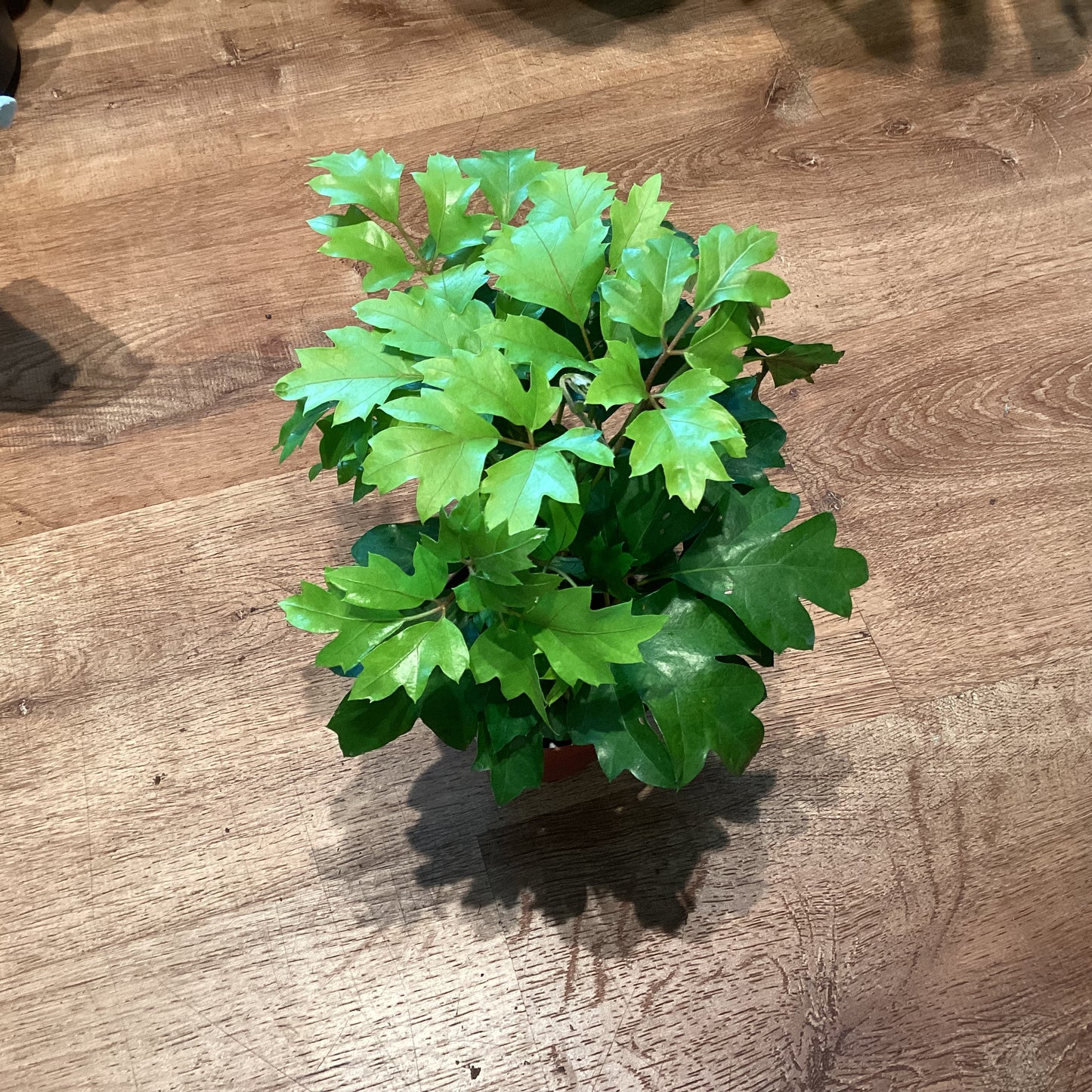The Plant Lady SF
Cissus alata (Grape Ivy)
Cissus alata (Grape Ivy)
Couldn't load pickup availability
Cissus alata—commonly known as Grape Ivy—is an easy, fast-growing vine admired for its trailing stems and lush, glossy leaves. Its bright, fresh-green foliage matures into deep emerald tones, often shaped into attractive lobes reminiscent of true grapevines. Perfect for shelves, hanging baskets, or spilling from elevated planters, this plant quickly creates a lush, inviting feel.
Grape Ivy is famously forgiving and adaptable, thriving even with occasional neglect—perfect if you're seeking greenery without fuss.
Light: Bright gentle light to medium-low conditions. Tolerates lower light levels beautifully.
Temperature: Comfortable room temperatures (55–85°F). Protect from frost or cold drafts.
Humidity: Average household humidity (40–60%) is fine; slightly higher keeps leaves glossy.
Water: Allow the top 1–2 inches of soil to dry between waterings. Avoid keeping soil soggy.
Potting mix: Standard well-draining houseplant soil mix.
Fertilizer: Monthly feeding with diluted balanced houseplant fertilizer during active growth.
How to grow Cissus alata (Grape Ivy) indoors:
Grape Ivy grows happily indoors in bright gentle light, thriving in average household conditions. Water moderately, allowing slight drying between waterings, and occasionally mist leaves or use a humidifier for optimal leaf health. Distilled or filtered water is best, though high-quality tap water—such as San Francisco’s Hetch Hetchy supply—is usually fine.
How to grow Cissus alata (Grape Ivy) outdoors in the Bay Area:
In the Bay Area, Grape Ivy thrives outdoors in mild, protected spots such as shaded patios or balconies with bright gentle light. Provide protection from intense sun, wind, and temperatures below 45°F. During colder months, bring indoors or protect in a sheltered area.
Pet safe: Yes
Difficulty: Easy—excellent for beginners or those who prefer low-maintenance plants.
Share


